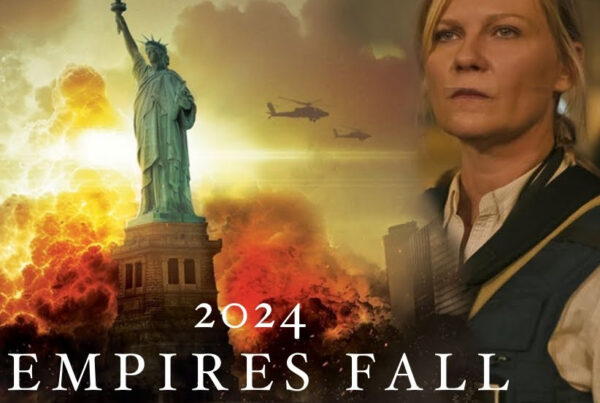Everyone knows that the Moscow metro is very beautiful. In a certain sense, talking about it is like a cliché, but I think it allows us to reflect on the role of beauty and art in a contemporary organised community.
I have been a great critic of ‘museums’ in their contemporary understanding as spaces that justify and legitimise the disfigurement of public spaces. It is not that Moscow lacks museums. On the contrary, the Russians have museums to remember every conflict, every national achievement, every historical event, etc.
In contemporary liberal-democratic societies, the ‘museum’ is the delimited space where works of art, historical memory, and generally beautiful things are locked away so that citizens can visit it as ‘leisure’ in their ‘free time’.
By contrast, everyday life is surrounded by ugliness, mediocrity, and indistinction. The modern citizen moves through spaces whose organisation is determined by criteria of utility and cost-benefit, with any further concern considered a luxury.
I recall here that in a few countries, roads deviate from mountains or forests when popular wisdom claims that a benevolent tutelary spirit dwells there, even if the detour means an increase in cost — an axiological universe utterly different from ours.
This transformation is, naturally, part of an economistic and materialistic logic aligned with the Realm of Quantity, which has become generalised with the spread of modernity. But one must not forget that beyond these ‘natural’ transformations there really are architects and designers who consider it necessary to surround man with ugly and unpleasant buildings because they believe that beauty promotes ‘conformity’ with the established order.
However, the Russians have not neglected public spaces like other peoples. There are museums, and public spaces are full of works of art, monuments, and traditional architecture — all facilitating permanent contact with one’s own history, one’s heroes, the deeds of ancestors, etc.
I am also impressed by the decorative detail of each public space, marking a return to rococo after a period of functionalist and grey brutalism. The Russian lacks the post-post-post sick irony of those who see something beautiful and consider it ‘kitsch’. What is beautiful is beautiful. Seeing beautiful things is good. It is as simple as that.
The attention dedicated by the Russian state to the metro seems brilliant to me. After all, what other public space receives so many visitors?
The Moscow metro is filled with murals, statues, memorials, and reliefs that recall national heroes, military victories, great deeds of the past, etc., scattered everywhere. And it is not just for tourists to contemplate them.
I could also see that the locals sometimes pay attention to these works, caught in reflection, captured by some symbol, bust, or mural evocative of a collective memory.
I wonder what it would be like if, for example, the Rio de Janeiro metro were filled with arts and monuments celebrating the FEB1, the War of the Triple Alliance2, the expulsion of the Dutch and French3, the flight of Santos Dumont4, etc. — all, of course, in traditional artistic and ‘realistic-heroic’ style.
No gimmicks, ‘tricks’, inversions, reversals, ‘expectation breaks’, irony, etc. — just that which is grandiose being portrayed as beautiful and harmonious.
In Russia, it is clear that a Brazilian nationalist revolution must also encompass an aesthetic and architectural revolution.
Footnotes
The FEB, or Força Expedicionária Brasileira, refers to the Brazilian Expeditionary Force, a military unit that the Brazilian government sent to fight alongside the Allied forces in the Mediterranean theatre of World War Two. Comprising members of the Brazilian Army and Air Force, the FEB fought mainly in Italy from September 1944 to May 1945, participating in several significant battles, such as the Battle of Monte Castello. The participation of the FEB marked the only instance of a Latin American country sending troops to fight overseas during World War Two.
The War of the Triple Alliance (1864-1870) was a conflict between Paraguay and the Triple Alliance of Brazil, Argentina, and Uruguay. Initiated by Paraguayan President Francisco Solano López, the war led to catastrophic losses for Paraguay, including a significant reduction in its population and territory. It remains the deadliest war in Latin American history, reshaping the geopolitical landscape of the region.
The expulsion of the Dutch and French from Brazil refers to historical episodes where colonial forces from these two countries were ousted from Brazilian territories. The Dutch expulsion is notably tied to the seventeenth-century battles in Northeastern Brazil, where Portuguese-Brazilian forces eventually drove out the Dutch, who had occupied the area for about a quarter-century. The French were expelled in the sixteenth century, notably from Rio de Janeiro, in an effort led by the Portuguese to consolidate their colonial holdings in the region.
The flight of Santos Dumont refers to the pioneering aviation achievements of Alberto Santos-Dumont, a Brazilian inventor and aviation pioneer. Among his many contributions to aviation, his most celebrated achievement occurred on 23 October 23 1906, when he successfully flew his aircraft, the 14-bis, in front of a crowd in Paris, France. This flight is considered by many as the first to be conducted by a powered, heavier-than-air aircraft in sustained flight with a pilot aboard in the presence of witnesses.









